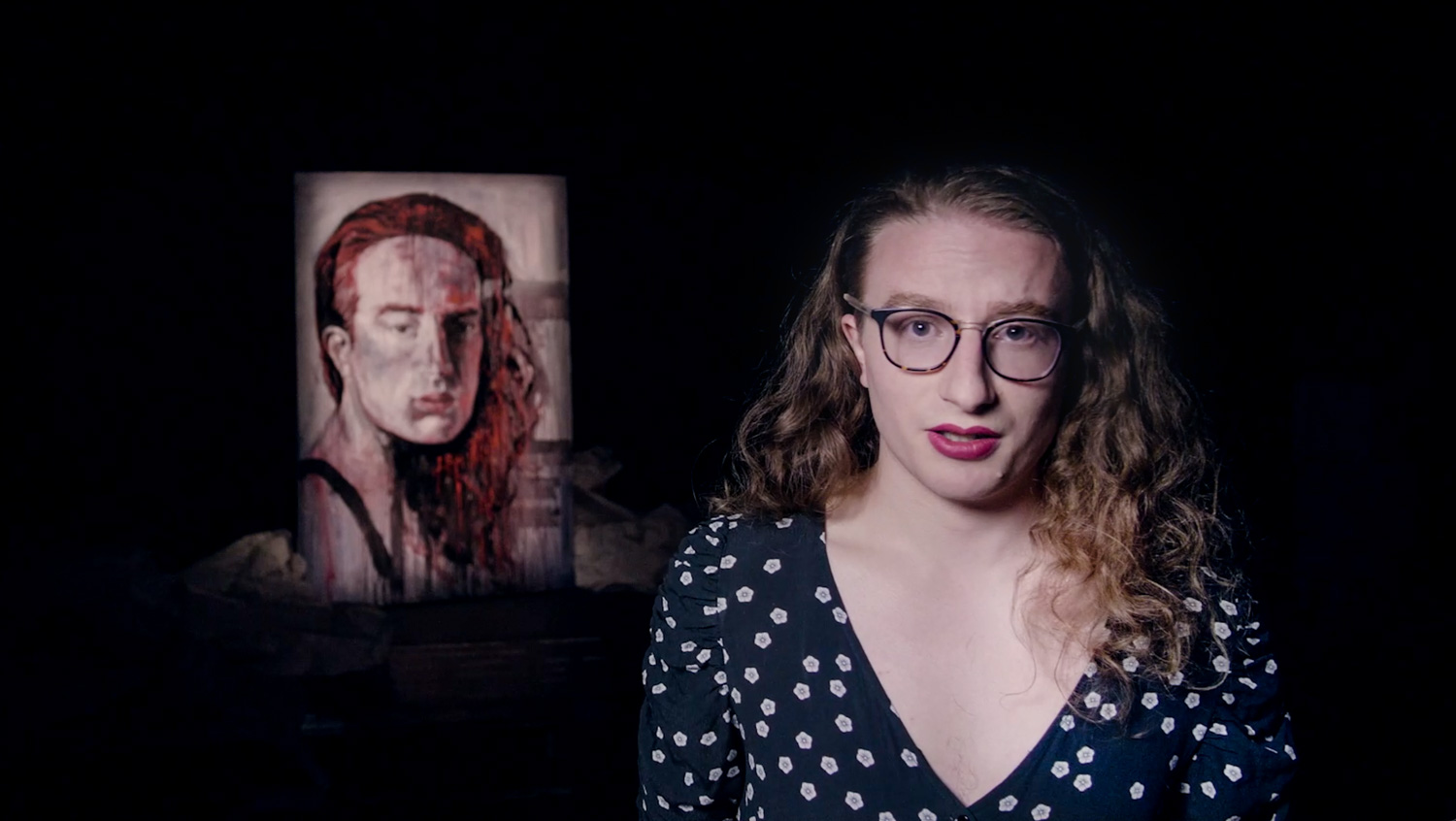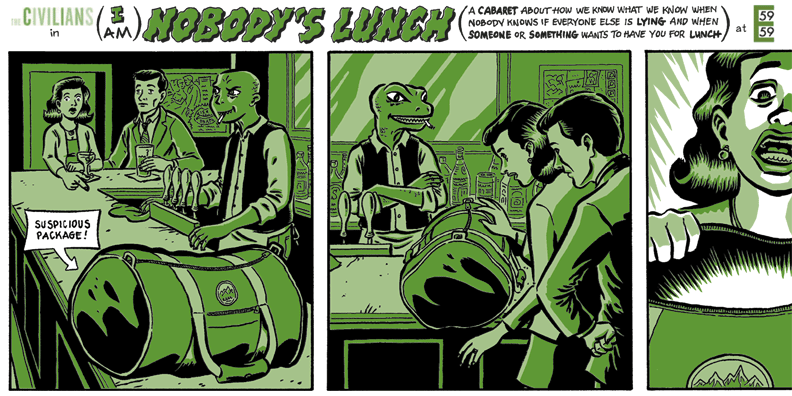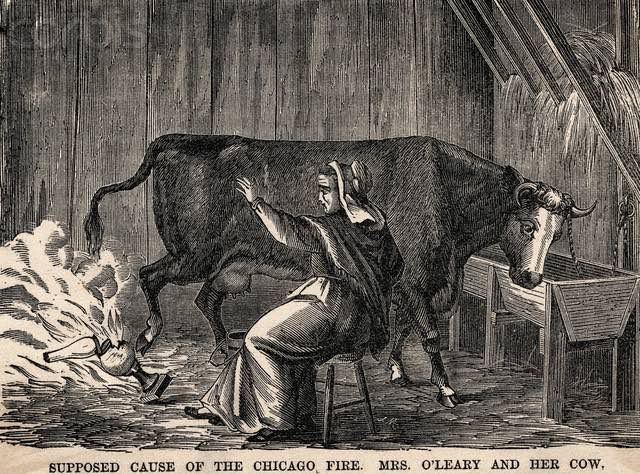“That form is empty was one of the Buddha’s earliest and most frequent pronouncements. But in the light of Prajnaparamita, form is not simply empty, it is so completely empty, it is emptiness itself, which turns out to be the same as form itself.” – Red Pine’s Heart Sutra
I will aim to speak my truth and not punish others.
I will try to meet my needs, be clear with my boundaries, and accept that others may be disappointed.
I will do my best to let go of trying not to disappoint others.
I can act with integrity and kindness, and I am human, and I will make mistakes.
I will be accountable for my actions, and acknowledge when I cause harm and hurt.
I will try to recognize that I need to take care of myself, and that my needs may be in conflict with what others expect, hope, and/or desire of me.
This I promise myself.
I can’t save her.
I can only save myself
/
Saving myself is saving her.
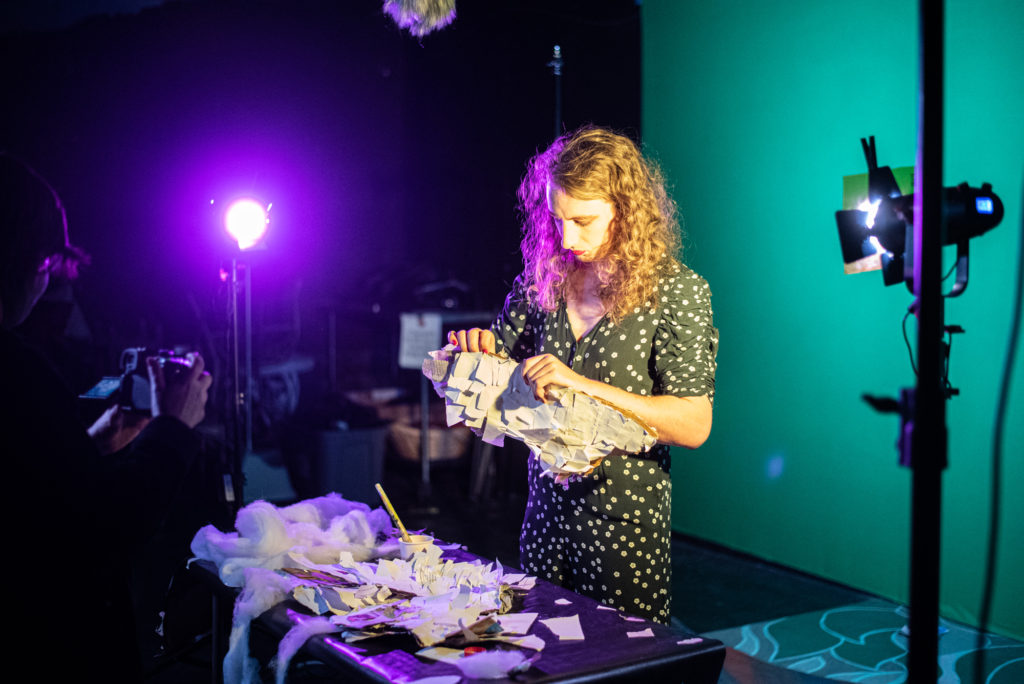
I don’t make New Year’s resolutions. I rarely make verbal or written commitments to myself. This year is a total shift and transformation. Saturn Returns. Cocoon / Butterfly. I am stepping into myself. I guess I always have been, but this last year in particular feels like really learning how to not just listen, but to hear, breathe, and then respond from my heart.
As an artist, I process myself through creation. An unspoken argument with my mom turns into the short film, LET GO MOTHER, starring myself and Deirdre O’Connell. A relationship with fraught communication and beautiful gender exploration becomes the film, titled, B3d 0f R0s3s. A breakup sparks creating a sculpture through destroying a translation of THE SEAGULL, some blue paint, cardboard, and a few 3” screws.
My most recent unfolding, LET GO OF ME, is an autobiographical play/film about my relationship with my mom who lives with bipolar disorder, and my relationship with myself as transgender, non-binary, and intersex.
I write the first draft in 2017; it follows my life up until that point. During the next four years, I come out as transgender and non-binary, I start HRT (hormone replacement therapy), and at a sperm bank, discover that I’m intersex. My mom experiences another manic episode in the same year that her father, my grandaddy, dies at the lovely age of 100.
It’s easy for me, as I write this now, to remember and feel my own excitement as I’m adapting my play. Tighten and trim. Stretch and fold. I know I have a unique opportunity to bring my filmmaking passion into play, creating something new. Something I’ve yet to see in Zoom theater. I think the script is quite confusing in its final form; radically different than what much of our team is used to. I’m so glad that they trust me. That they go along, even when it makes no sense. Certainly there are parts that are unclear to me, and become so much more magical through our collaboration.
During the final few weeks of rewrites it becomes clear that voicemails from my mom, left during her most recent manic episode, will be the thread that ties us to her lived experience. These are transcripts of voicemails she’s left, that I never listened to. As I weave them into the play, I feel like a detective, piecing together those few months of her life; different events that I’ve only heard of from other family members, and never really understood.
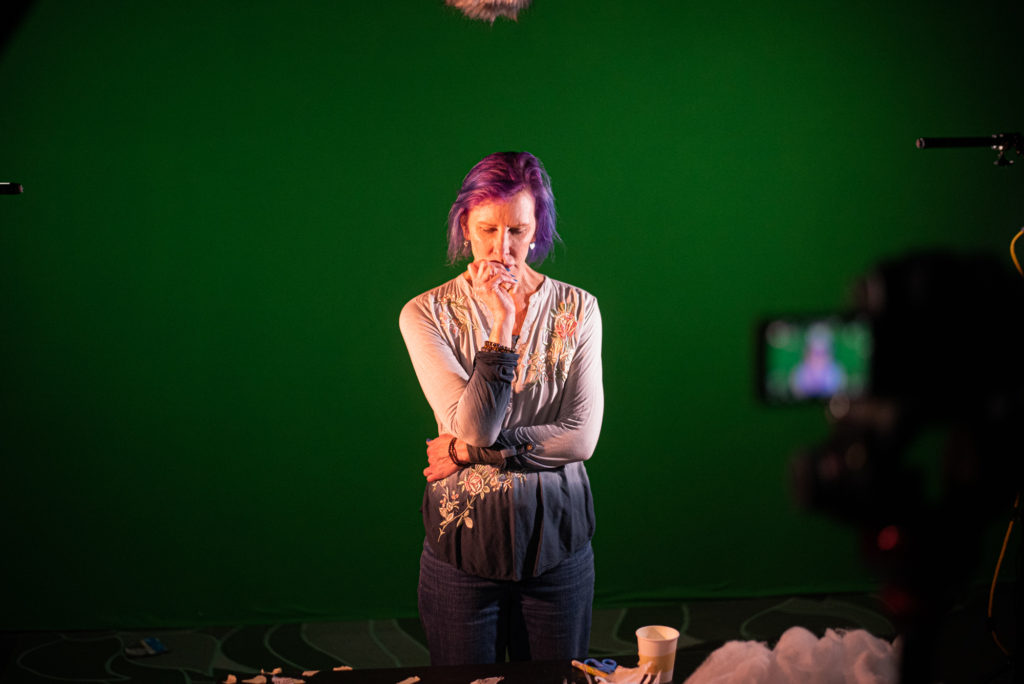
It’s so hard listening to her in that state. Begging me for help. Raging at me for disappearing. Praising me for taking care of myself and putting up barriers. I get through it by using transcription software and listening as little as possible. I never consider what it’s going to be like to have an actor read those lines out loud. To listen to them during every performance.
I never really imagine playing myself. After a lengthy search, and no one really fitting, we decide that I will play me. It seems so obvious now, and I don’t know how it could work differently, at least in this iteration. This heightens everything, focusing our lens on the act of creation as self-discovery. It magnifies the layers we build through the artifice and honesty of theatricality, slowly peeling back to reveal a directness, an openness, and a vulnerability that we strive for as storytellers.
A thread that has been there since the first draft, tying present to past, is a self portrait. In this reality, years ago, I paint it directly on the wall of my mom’s kitchen. I look a little like a young Bob Dylan. I base it on a still image from a friend’s black and white film I acted in during college. Branches frame my face, adorned with weird perching bird-like creatures wearing human masks. They are my ancestral wisdom, my feelings, my humanity.
This mural is a mystery to us – one of the last puzzle pieces we can’t quite figure out in the set design. Where does it go? How does it happen? Is it a direct recreation of the real-life mural? In a fit of necessity, I take the Saturday before tech, my only free day, and I just paint. It needs to happen and I know I can do it.

And then it just becomes clear.
It becomes clear that me, playing myself, painting a self portrait will become the visual glue that ties the whole piece together, playing over the auditory threads of my mom’s voicemails, tying me to her. A direct visual action. Me finding me, creating throughout, right in front of the audience.
LET GO OF ME is a messy tangle of timelines. Zoom conversations from “now” are woven seamlessly into scenes of Ashley (me) writing LET GO OF ME. That writing blends into actors acting out those memories. Fourth walls are broken and then rebuilt. Ashley and Daphne (my mom) read the script out loud, remembering the actual events they experienced years prior. Through mom’s manic episodes and struggles with chronic illness, Ashley grapples with the difficulties of prioritizing their own needs and self care, while at the same time being a loving and supportive child.
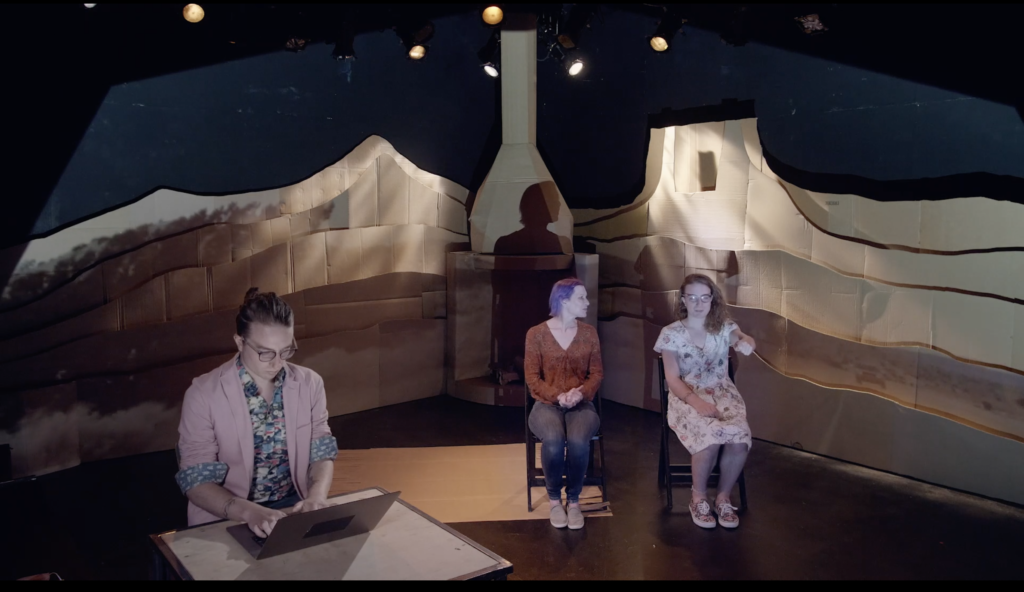
As writer and director, my greatest fear is that this version of my mom will be perceived as a monster. I do my best to paint the fullest picture of her experience, every stroke intentional and loving. She is absolutely magical when I come out to her as transgender and non-binary. She’s always been a champion for my art, encouraging me to tell our story. I know she loves me unconditionally, even if, in the midst of an episode, her illness speaks through her and says otherwise.
During rehearsals, we dive into my lived experience. The memories that inspire each scene. Who my mom is at her core, and how her illnesses impact everything. At times it is very emotional, though always safe and deeply cathartic.
My biggest struggle during the first few weeks of rehearsals and filming is the vast disconnect between what we are creating and my memories. I know early on that I didn’t want to reenact or recreate my lived experience. That will be lifeless. I know that this is something new. LET GO OF ME needs to be active and present, it needs to grow and find its own life. Early on, we decide not to share my mom’s actual voicemails with Marty Moore, who brilliantly plays Daphne / my mom. When we record the voicemails, it sounds so different to me. I have to divide myself, turn off my memory, and trust in our process. And Marty’s talents.
The climax of the play is a phone conversation with my mom. I try to help her take her meds, to prevent a manic episode, and instead she has a psychotic break with reality. It’s one of the scariest things I’ve ever lived through. I know I can write it. I know I can act it once for the recording. Somewhere along the way I forget that I’ll be listening to it through every performance. During our first dress rehearsal, when I realize how many times I’ll need to hear it, I feel my entire body recoil and tense up. Throughout our run, it transforms. I no longer feel a disconnect between Marty’s performance and my memories. It is still very different, and I know we’ve succeeded in nurturing this play, giving it its own life.
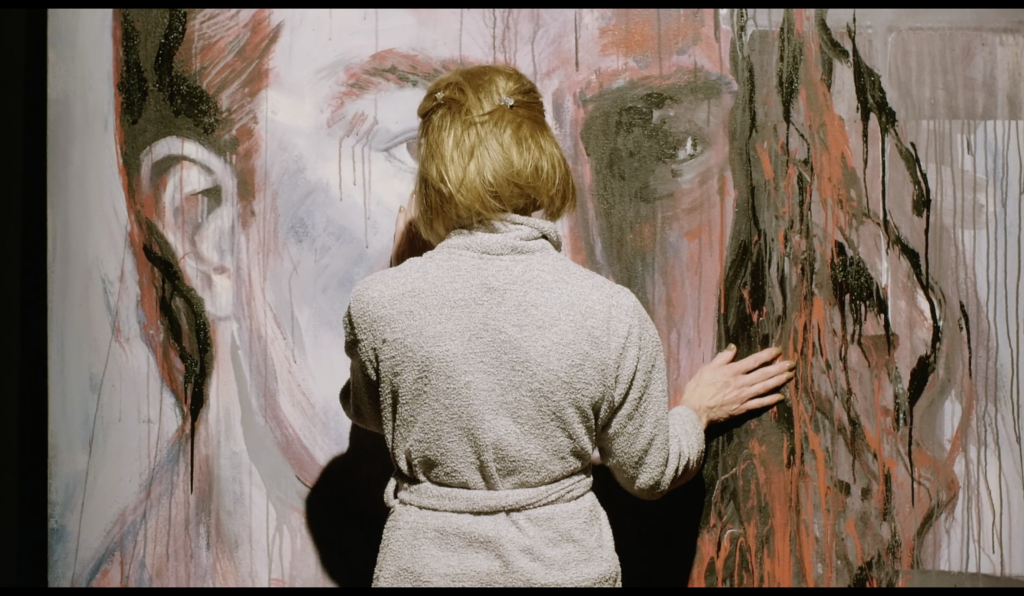
LET GO OF ME is a call to action. For my mom, for me, and for anyone else. I am asking my mom to let go. I am asking myself to let go, too. I imagine my mom asking me. I think that is what Buddhism tries to teach me, and I try, as stubborn as I am in my humanity, to let go of expectations, of hopes and desires. It’s an odd duality. If I completely let go, I think my humanity will also disappear, I’ll float away and dissolve into un-being, and yet, not letting go brings suffering. That conflict and tension is so compelling and, I hope, relatable.
First a play, then imagining it as a possible film, it never takes flight. I’m not quite sure where LET GO OF ME belongs. As a hybrid in the midst of the pandemic it turns out.
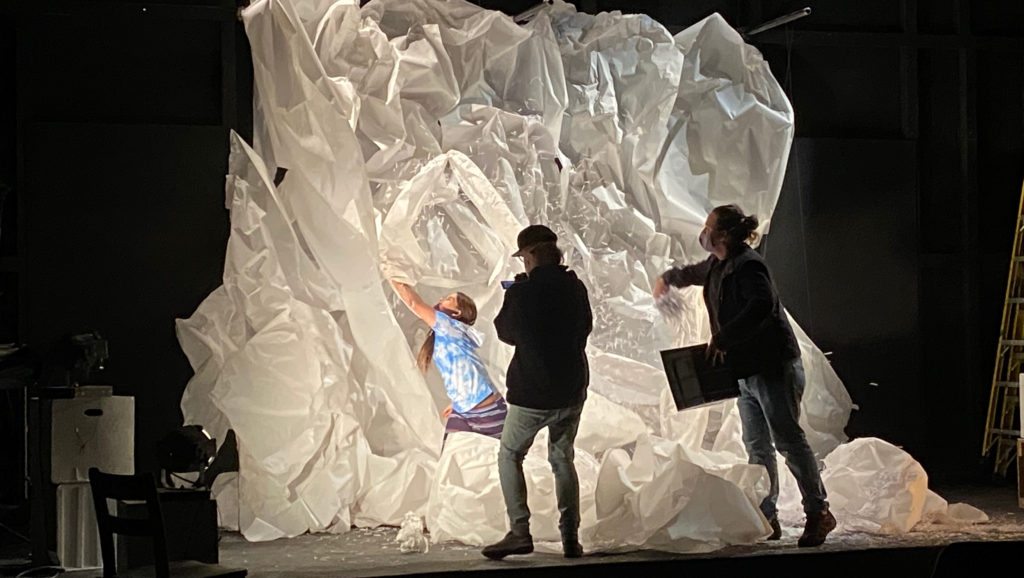
During production, we often ask ourselves, “Why aren’t we pre-recording the entire thing?” Our limited audio experience, lack of god-mic, and COVID-19 safety precautions (one actor per space, three different stages, each on a different floor), gives us countless headaches, and results in the worst tech and dress rehearsal I’ve ever been a part of.
Everyone’s mics cut out at one point or another, and in the middle of scenes I’m acting in, I have to take off my bluetooth headset, run up three flights of stairs, and restart computers, cameras, and anything else with an on-off switch.
The entire thing almost collapses during our first show. We frantically flap our flimsy cardboard wings as we plummet, and somewhere along the way, I remember the spark that keeps me going. We are falling and flying at the same time. They aren’t really separate things. This is why we’re doing this ridiculous thing called a play. The tech issues prohibiting our communication as theater makers compound, creating a beautiful expression of my conflicting communication with my mom. Our distance from each other as actors, isolated on separate stages, responding to each other only through bluetooth headsets, mirrors the isolation I feel during pandemic quarantine. During intermission I giddily run up to the balcony where Live Arts’ interim artistic director, and the rock we all rest upon, Jeremy Pape is running the show. I tell him “I’ll take this version over any other. It’s imperfect, messy, and beyond beautiful. It is life.”
In the middle of telling Jeremy how happy I am, I realize why I instinctively resisted memorizing the epilogue. As a direct address to my mom and the audience, written in the script it tidily tied up the play, but ultimately it was incomplete. Unfinished until performed. I address the tech issues. I embrace them. I don’t apologize. I smile at their imperfect perfection. This is why we do live theater.
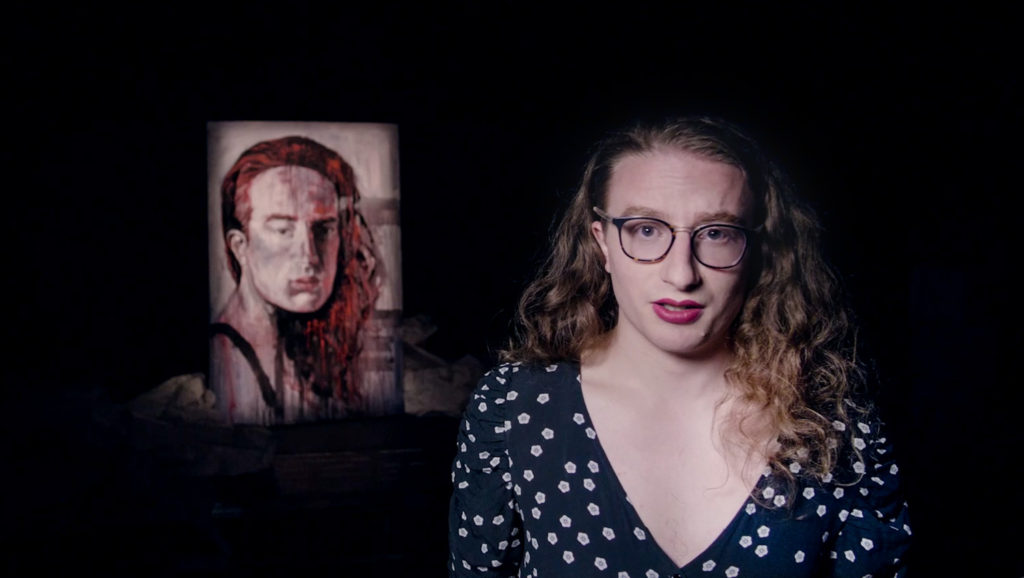
In subsequent performances, I cheer whenever we have a tech issue. A perfect performance feels “less than” to me. Missing something vital.
My mom and I aren’t talking right now. Our boundaries slammed into one another last fall and I decided to put up walls.
I’m not sure if she’s seen the play.
I hope she will someday.
Its creation is a self exploration. An in-process processing through the act of creating.
I carry her in my heart throughout. If I ask, I can hear her wisdom. I can feel her love. I know that we are with each other every day. We are not separate.
LET GO OF ME is my truth.
I do my best to write it with love.
I do my best to direct with kindness.
I do my best to act with honesty.
My relationship with my mom isn’t over. I know we will both continue to connect, to work together and figure out a way to be in healthy relationship with one another.
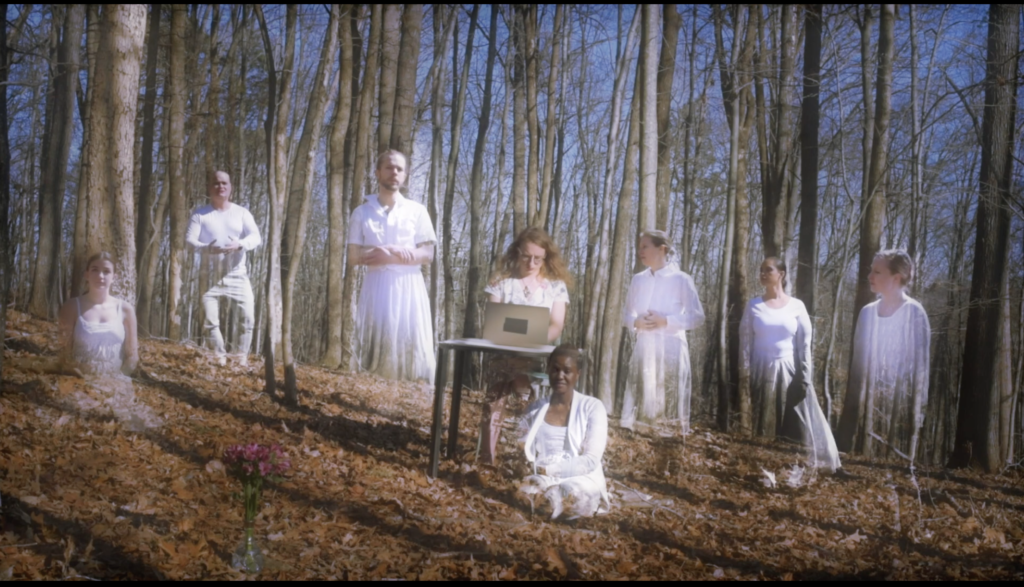
Neither is LET GO OF ME over. I’m not sure where it goes from here, but I know it still has life. I’m sure I’ll have more lived experience to add to the next draft. Perhaps it transforms into a more traditional film. Perhaps it stays on the stage, with a live in-person audience. Maybe it continues to be both all at once. How exciting would it be for me to paint a new self portrait, in real time, every performance? How can we continue to embrace distanced Zoom theater in a live setting, incorporating technology as a means of connection and as a metaphor for disconnecting?
I know that we need more plays like this. We need more stories about families that struggle with mental health pushing through and sharing love with one another. We need more stories about transgender, non-binary, and intersex people. I feel like I’m echoing a chant I’ve heard endlessly, but that doesn’t make it less true. We need to see ourselves on stage and on screen. We need to be told that we are valid and loved and accepted. We need to be shown the door of where our ancestors have gone, and how we can take the next steps.
I know I’ll continue to grow through this piece. And I am so excited to continue telling our story.
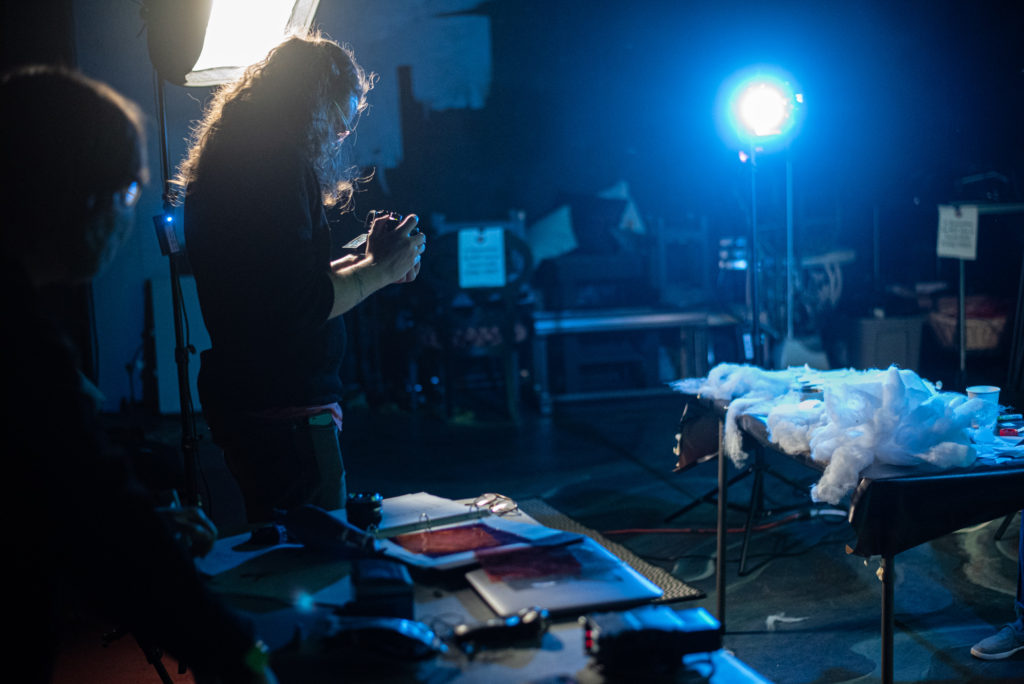
Special thanks to Live Arts Theater for making LET GO OF ME a reality. Thank you to Annie Temmink who encouraged me to share my play. Thank you to Jeremy Duncan Pape for an enthusiastic YES! and all of your support throughout the process. Thank you to Leah Putnam, our dramaturg, who I couldn’t have successfully written this without. Thank you to our amazing artistic team and Live Arts Family, and to my parents, and mom especially.
To learn more about The Civilians and to access exclusive discounts to shows, join our email list at TheCivilians.org.
Author
-
Kelley Van Dilla is a NYC-based non-binary trans theatre and film director and writer who is passionate about self-expressive and reflective work, often centered around their gender identity, sexuality, and experience with a mother who has bipolar disorder. They recently explored the collision of their identities with the world premiere of their autobiographical hybrid feature film/play, LET GO OF ME, at Live Arts Theater in Charlottesville, Virginia (March 2021) and is currently in pre-production on their next feature film, CLIO: a positive transgender romance. Their autobiographical short films, B3d 0f R0s3s and LET GO, MOTHER, premiered at Cucalorus film festival in Wilmington, NC, where they moonlight as a film judge and occasional MC/host. Other projects include AMERICAN RUST with Showtime, HIGH MAINTENANCE with HBO, Steven Soderbergh's THE KNICK with Cinemax, and theatrical productions of HAMLET, RED, THE PILLOWMAN and THREE SISTERS. She is a frequent collaborator with Chekhov at Lake Lucille. As a co-founder of Playground of Empathy and co-creator of the WALK in My Shoes Experience, she is a proud recipient of the Harvard Culture Lab Innovation Fund (2020). She loves painting, photography, and travel; she has walked the 1,200km O'Henro Buddhist Pilgrimage to 88 Temples on the island, Shikoku, in Japan. Kelley uses they/them/their and she/her/hers pronouns.


